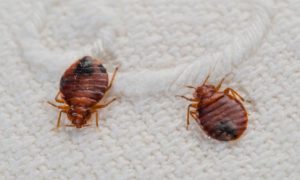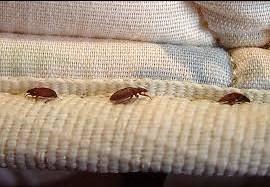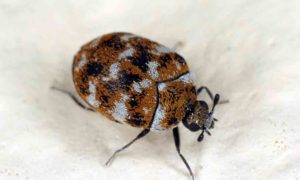It’s summertime and we have all been waiting for the warmer weather after a brutal winter. Time to start thinking of beaches, parks and road trips. You might also be thinking of where you will be send your kids to camp this summer but, I’m pretty sure, that having bed bugs in camps has never crossed your mind. Today we will look into what camps can do to identify, eradicate and most important, to prevent bed bug infestations.
Bed Bug Problems In Camps
Did you know that every year, the American Camp Association Camp Crisis Hotline receives calls from camps that have questions about bed bugs? Some mention they have detected signs of bed bugs or they are preparing for an infestation — should it occur — and want some advice.
Camps are looking for resources, guidelines, and products to help them. Here we will give you some great advice and tips for helping your camp with bed bug questions.
Top Five Tips For Camps
UNDERSTAND: Have your staff become knowledgeable about bed bugs, their prevention, treatment, and abatement.
INSPECT: If you suspect that someone in your camp has been bitten by bed bugs, thoroughly examine crevices in walls, mattresses, and furniture. You will need to perform Your Inspection at night when bed bugs are active. Examining during the day most likely will not be useful. Tips on how to identify bed bug infestations are provided below.
ABATE: If your camp is infested with bed bugs, understand that eliminating them can be a very difficult process because bed bugs hide so well and can live for months without eating. Consider all the options (quickly) before deciding on your plan of action. Recommendations are listed below and the good news is that you can actually do it yourself.
TREAT: Understand that bed bugs, while irritating and a nuisance, according to the Centers for Disease Control and Prevention, they do not Transmit Disease. Treatment of those who have been bitten can usually be handled by your on-site health care staff. However, there are situations where those bitten should see a doctor. See below for more information.
PREVENT: Be very wary of accepting second-hand items such as mattresses and upholstered furniture. Examine any second-hand item extremely carefully and don’t use if not in exceptional condition.
Overview of Bed Bugs
Bed bugs are reddish-brown, oval, and flat — about the size of an apple seed. Bed bugs are insects; more specifically, they are “True Bugs,” which have piercing mouthparts that in most species are used for feeding on plants.
Unfortunately, there are some species of bugs with mouthparts that have been adapted to feed on human blood while inflicting very little pain (most never feel the bed bug feeding). The eggs are white and about 1 mm long. The nymphs look like adults but are smaller. Complete development from egg to adult takes from four weeks to several months depending on the temperature and amount of feed available.
Bed Bug Facts
- Bed bugs are flat, wingless, and about one-quarter of an inch long.
- Bed bugs don’t care if a home is neat or messy, only that people–their food source–are near. There’s no evidence that they transmit disease.
- They have six legs and are shiny reddish-brown. But after feeding on human blood, they appear dark brown and swollen.
- They can be seen with the human eye, but are known to hide during the day.
- By feeding on infected people, bedbugs can be infected with some blood-borne diseases. However, there is no evidence that bed bugs can transmit these diseases to other people.
- Bed bugs feed on human blood and prefer to do it in the dark when you’re sleeping.
- Simply using chemical treatments will not remove the infestation. IPM should always be used.
- Bed bugs are great hiders. Favorite locations are: in the seams of mattresses, sofa seams, cracks in the bed frame and/or headboard, under chairs, couches, beds and dust covers, under rugs, edges of carpets, drawers, baseboards and window casings, behind light switches, electrical outlet plates, cracks in plaster, televisions, radio clocks and phones, backpacks, sleeping bags, clothes, behind wallpaper, picture frames, and other dark areas.
Symptoms
It can be difficult to distinguish Bed Bug Bites from other insect bites. In general, the sites of bed bug bites are usually:
- Red, often with a darker red spot in the middle
- Itchy
- Arranged in a rough line or in a cluster
- Located on the face, neck, arms, and hands
Some people have no reaction at all to bed bug bites, while others experience an allergic reaction that can include severe itching, blisters, or hives.
- When to see a doctor — if your afflicted camper or staff experience allergic reactions or severe skin reactions to their bed bug bites, they should see your doctor for professional treatment.
Enspection For Bed Bug Infestation
If you suspect that someone in your camp has been bitten by bed bugs, thoroughly examine crevices in walls, mattresses, and furniture. You will need to perform your inspection at night when bed bugs are active. Look for these signs:
- Dark specks. Typically found along mattress seams, these specks are bedbug excrement.
- Empty exoskeletons. Bed bugs molt five times before becoming adults. These empty skins are light brown.
- Bloody smears. You may find small smears of blood on the sheets where you accidentally crushed an engorged bed bug.
Since bed bugs can disperse throughout a building, it will be necessary to inspect adjoining rooms and cabins.
Treatment of Individuals Bitten by Bed Bugs
Be sure to work with your camp healthcare staff. Generally, the redness and itch associated with Bed Bug Bites usually go away on its own within a week or two. However, treatments to speed the recovery might include:
- A skin cream containing hydrocortisone
- An oral antihistamine, such as diphenhydramine (Benadryl)
- If a skin infection develops from scratching bed bug bites, a doctor may prescribe an antibiotic.
Treating Your Camp
Once individuals have been treated, you must tackle the main infestation. This can be difficult because bed bugs hide so well and can live for months without eating. Some experts disagree on whether you can tackle the infestation yourself, or whether you will need to hire a professional exterminator, who may use a combination of pesticides and non-chemical treatments.
Thanks to the internet, anyone with a bed bug infestation has an assortment of management tools at their disposal. You can use Natural or use what the Professionals use and everything is available to you.
Since bed bugs can disperse throughout a building, it often will be necessary to inspect adjoining rooms and cabins. Consider the options (quickly) before determining if this is something you can take on yourself. I suggest the following non-chemical treatments:
- Vacuuming. – A thorough vacuuming of cracks and crevices can physically remove bed bugs from an area. But vacuum cleaners can’t reach all hiding places. Optimum results will be achieved by moving and scraping the end of the suction wand along infested areas such as seams and fabric folds of beds and sofas, and the perimeter edge of wall-to-wall carpets. Once you have vacuumed everything, immediately place the vacuum bag into a plastic bag, seal it tight, and dispose of it in an outside trash container.
- Hot Water. – Washing clothes and other items in water at least 120° F (49° C) can kill bed bugs.
- Clothes Dryer. – Placing wet or dry items in a clothes dryer set at high heat for twenty minutes will Kill Bed Bugs and their eggs.
- Sealing. – Sealing infested mattresses and pillows with plastic or hypoallergenic zipped cover can trap the bugs that are inside and prevents them from feeding. Another option is to encase both the mattress and box spring in a protective cover like those used for allergy relief. Encasements specifically designed to help protect against bed bugs are available through retail outlets or pest control firms. Once the cover is installed and zipped shut, any bugs which happen to be inside are entombed and eventually will die. Encasements also help protect newly purchased beds and make it easier to spot and destroy any bugs residing on the outer surface during a subsequent inspection. Encasements kill bed bugs over time — remember, a nymph can live for two months without feeding, an adult can survive more than twelve months! Thus, this might not be practical at your camp. Also, Encasements will not keep bed bugs from crawling onto a bed and biting a sleeping person.
- Enclosed Bags. – Items which cannot be put in a washer or dryer can sometimes be de-infested by wrapping in plastic and placing them outdoors in a hot, sunny location, for at least a day. If this method is attempted, packing fewer items per bag makes it harder for the bugs to find cooler places to hide. Monitoring with a thermometer is prudent, with a target internal temperature of at least 120° F (49° C).
- Enclosed Vehicle. – If it’s summer, you can bag up infested items and leave them in a car parked in the sun with the windows rolled up for a day. The target temperature is at least 120°F (49° C).
- Freezing. – Bedbugs are also vulnerable to temperatures below 32° F (0° C), but you’d need to leave the items outdoors or in the freezer for a recommended five days.
- Monitor Your Progress. – You can place Climb Up Interceptors around the legs of the beds in the room to catch the bed bugs as they climb up to feed; this gives you a way to monitor the effectiveness of your efforts.
Throughout much of the country, heating tends to be a faster, more reliable option than chilling. Studies have shown that attempts to rid an entire dwelling of bed bugs by raising or lowering the thermostat will be unsuccessful, although some companies are having success using a thermal heater.
To Throw Out or Not to Throw Out
Eliminating bed bugs, especially from beds, can be challenging. If there are holes or tears in the fabric, the bugs and eggs may be inside, as well as outside. There also are restrictions on how beds can be treated with pesticides. Please always use chemical per label instructions.
For these reasons, it is sometimes recommended that beds be discarded, especially when heavily infested or in poor condition. When infested items are discarded, bagging or wrapping them prevents dislodgement of bugs en route to the outside trash container.
Professional vs. Non-Chemical?
While the measures above are helpful, sometimes only treatment with insecticides will eliminate your bed bug infestation. Professionals treat using a variety of low-odor sprays, dust, and aerosols. Application entails treating all areas where the bugs are discovered or tend to crawl or hide. This may take hours of effort and follow-up treatments are usually required.
You must remember to treat the seams and crevices of the infested bed with insecticides, but you don’t spray the entire mattress surface. That’s what mattress encasements are for. Also, you should not spray bed sheets, blankets, or clothing, which should be laundered.
Vacuuming and steaming further help to eliminate bugs and eggs from beds, but afford no residual protection and may not kill bed bugs hidden inside the box spring or mattress.
Fumigation is another way to treat beds and hard-to-treat items, but the procedure is not always the most economical. In extreme cases, entire buildings have been fumigated for bed bugs. The service can be quite costly and involves covering the building in a tarp and injecting a lethal gas. Some companies also treat such items with specialized heating equipment. This is, by the way, the worst case scenario.
Preventing Bed Bug Problems
- Secondhand Items. Inspect used mattresses or upholstered furniture carefully before bringing them into your camp. Treat them with the measures suggested above to ensure they are not infested.
- Birds and Bats. Eliminate any neighboring bird and bat habitats that may serve as a refuge for bed bugs.
- Campers Bringing Bed Bugs Into Camp. It is possible that campers and staff will bring bed bugs into your camp. Set up procedures to help reduce the chance of infestation.
Here are some prevention tips:
Have campers and staff store their stuff up off of the floor.
If you provide hanging space for clothes, make sure the rack is as far from the beds as possible.
Why Have Bed Bugs Comeback?
After largely disappearing for nearly 50 years thanks to the development of DDT and other broad-spectrum pesticides, scientists believe that the bed bug has made a comeback due to the evolution of insecticide-resistant genes, and international travel.
A University of Kentucky study proposed that escalating international travel from parts of the world where bed bugs were never under control is what allowed the pests to reestablish themselves in the U.S. about a decade ago.
That same study proposes that a shift away from broad-spectrum insecticides such as DDT, to more focused baits and targeted sprays for roaches, ants, and other urban pests could have allowed bed bugs to “slip through the cracks” and to develop a resistance to the insecticides that replaced DDT.
So, as we have read, bed bugs can be anywhere and if you think your immune to them than I don’t know what to tell you. Please just take extra precautions when traveling anywhere and make sure to avoid bringing them home. A few extra steps now can save you a lot of headaches later so, thanks for reading and please leave a comment below if you have other tips or questions about bed bugs.
Thanks For Reading,








